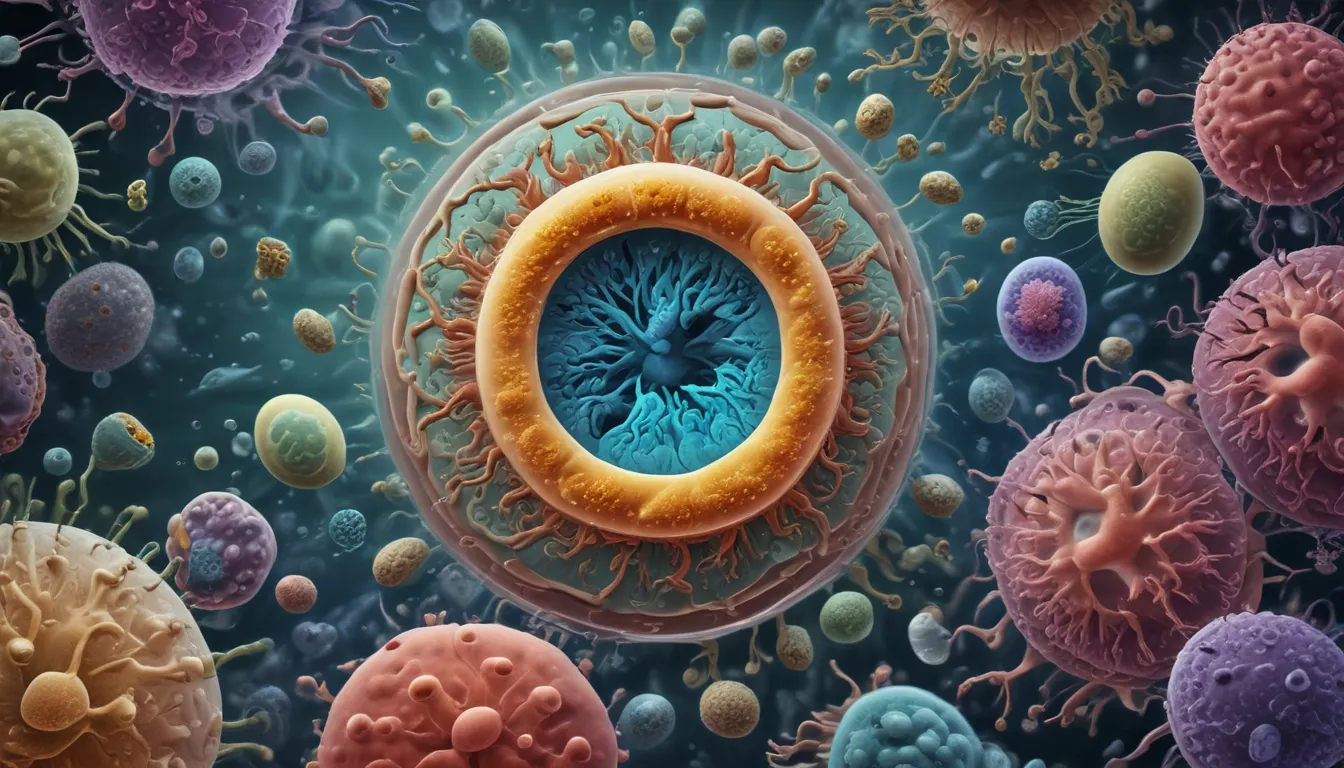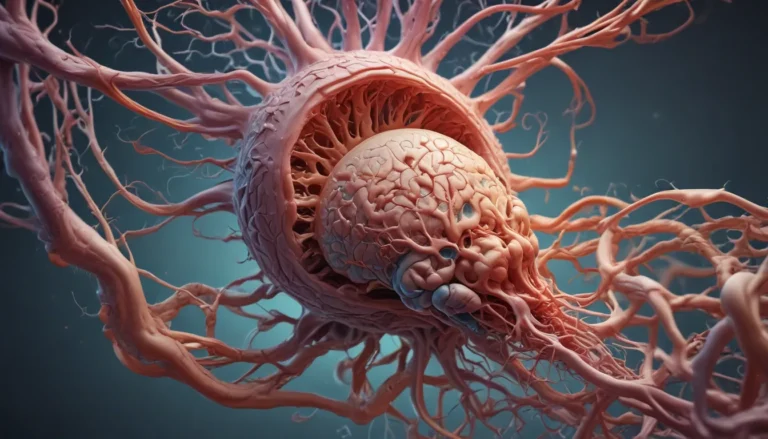A Note About Images: The images used in our articles are for illustration purposes only and may not exactly match the content. They are meant to engage readers, but the text should be relied upon for accurate information.
Prokaryotic cells, the microscopic organisms that lack a true nucleus and membrane-bound organelles, are a cornerstone of the natural world. Despite their simple structure, these cells possess a range of remarkable characteristics that contribute to their adaptability and success. In this article, we will delve into 11 unbelievable facts about prokaryotic cells, shedding light on their diverse shapes, unique energy production methods, and astounding adaptability. Whether you have a keen interest in biology or are simply curious about the fascinating world of microorganisms, these facts will certainly leave you in awe of the wonders of prokaryotic life.
Key Takeaways:
- Prokaryotic cells are incredibly small, lack a true nucleus, and have unique cell walls made of peptidoglycan, showcasing remarkable genetic diversity and essential roles in nutrient cycling.
- Found in diverse environments, from deep-sea hydrothermal vents to the human body, prokaryotic cells reproduce rapidly through binary fission, communicate via quorum sensing, and form symbiotic relationships, highlighting their adaptability and ecological success.
The Unique Traits of Prokaryotic Cells
Lack of a Nucleus:
Unlike eukaryotic cells, prokaryotic cells do not have a true nucleus. Instead, their DNA is located in the cytoplasm, forming a single circular chromosome. This arrangement allows for efficient gene expression and replication within these cells.
Small Size:
Typically much smaller than eukaryotic cells, prokaryotic cells have an average size of 1-10 micrometers. Despite their diminutive size, they contain all the necessary cellular machinery to perform vital life functions efficiently.
Diverse Environments:
Prokaryotic cells thrive in a wide range of environments, including deep-sea hydrothermal vents, hot springs, soil, and even inside the human body. Their adaptability enables them to colonize diverse habitats successfully.
The Marvels of Prokaryotic Cellular Functionality
Unique Cell Walls:
Prokaryotic cells boast cell walls composed of peptidoglycan, a complex molecule that provides structural support and protection. This feature differentiates prokaryotic cells from eukaryotic cells, which have distinct types of cell walls or none at all.
Rapid Reproduction:
Through a process known as binary fission, prokaryotic cells reproduce swiftly, with one cell dividing into two identical daughter cells in a short timeframe. This rapid replication enables quick growth and colonization.
Metabolic Diversity:
Prokaryotic cells exhibit a wide range of metabolic capabilities, from surviving in extreme environments to performing photosynthesis and nitrogen fixation. This versatility contributes to their ecological success.
The Social Behavior of Prokaryotic Cells
Symbiotic Relationships:
Prokaryotic cells engage in symbiotic relationships with other organisms. For instance, nitrogen-fixing bacteria reside in the roots of leguminous plants, providing essential nutrients to the plants while benefiting from their organic compounds.
Communication Abilities:
Through quorum sensing, prokaryotes communicate with one another by releasing signaling molecules. This communication allows them to coordinate behaviors, such as forming biofilms or expressing virulence factors.
The Resilience and Adaptability of Prokaryotic Cells
Extremophiles:
Certain prokaryotic species, known as extremophiles, thrive in environments that would be lethal to most other organisms. These cells can withstand high temperatures, acidic pH levels, high pressure, and even survive in outer space.
Nutrient Cycling:
Prokaryotes play a critical role in nutrient cycling on Earth by decomposing organic matter and breaking down complex compounds into simpler forms that can be reused by other organisms. Without prokaryotes, the recycling of nutrients would be significantly impaired.
Exploring the Genetic Diversity of Prokaryotic Cells
Genetic Variability:
Prokaryotic cells exhibit a remarkable genetic diversity, with vast differences in their genetic material. This diversity enables them to adapt and thrive in diverse environments, occupying various ecological niches.
As we uncover these 11 unbelievable facts about prokaryotic cells, it becomes evident that these microscopic organisms are truly remarkable. Their unique characteristics and adaptability provide a glimpse into the wonders of the natural world and the complexities of life itself. Remember, these facts about prokaryotic cells are just scratching the surface of the diversity and intricacy of these fascinating cells.
Conclusion
In conclusion, prokaryotic cells are captivating organisms that play a vital role on Earth. Their distinct features set them apart from eukaryotic cells, making them a subject of immense interest and study in the field of biology. From their size and shape diversity to their ability to thrive in extreme conditions, prokaryotic cells continue to astound scientists and researchers.
By familiarizing ourselves with the incredible facts about prokaryotic cells, we can develop a deeper appreciation for the complexity and diversity of life on our planet. Whether it’s their contribution to nutrient cycling, their resilience in changing environments, or their impact on human health, prokaryotic cells are undeniably remarkable and offer valuable insights into fundamental biological principles.
As our understanding of prokaryotic cells evolves, we can expect to uncover even more astonishing facts about these tiny yet powerful organisms. Let us continue to explore the world of prokaryotic cells and unravel the mysteries concealed within their microscopic structures.
FAQs
Q: What are prokaryotic cells?
A: Prokaryotic cells are a type of cell lacking a nucleus and membrane-bound organelles. They are typically simpler and smaller in structure compared to eukaryotic cells.
Q: How do prokaryotic cells reproduce?
A: Prokaryotic cells reproduce through binary fission, where one cell divides into two identical daughter cells.
Q: What role do prokaryotic cells play in the environment?
A: Prokaryotic cells are crucial for nutrient cycling, decomposition, and forming symbiotic relationships with other organisms in the environment.
Q: Can prokaryotic cells cause diseases?
A: Yes, certain prokaryotic cells, such as E. coli and Streptococcus bacteria, can cause diseases in humans and other organisms.
Q: Can prokaryotic cells survive in extreme environments?
A: Yes, prokaryotic cells are known for their ability to thrive in extreme conditions like hot springs, acidic environments, and deep-sea hydrothermal vents.
Q: Are all bacteria considered prokaryotic cells?
A: Yes, all bacteria belong to the category of prokaryotic cells. They form a diverse group of microorganisms found in various habitats.
In the vast realm of biology, prokaryotic cells stand as remarkable entities that continuously intrigue and inspire scientific exploration. Their microscopic presence belies their immense impact on our ecosystem. Delve deeper into the world of cellular wonders and uncover the intricacies of life’s building blocks.
Was this page helpful?
Our dedication to providing trustworthy, engaging content is fundamental to our mission. Each fact you encounter on our platform is contributed by real users, bringing a wealth of diverse insights and information. Our meticulous editing process ensures the highest standards of accuracy and reliability, guaranteeing that the facts we present are not only captivating but also authentic. Trust in our commitment to quality and authenticity as you embark on a journey of exploration and learning.





